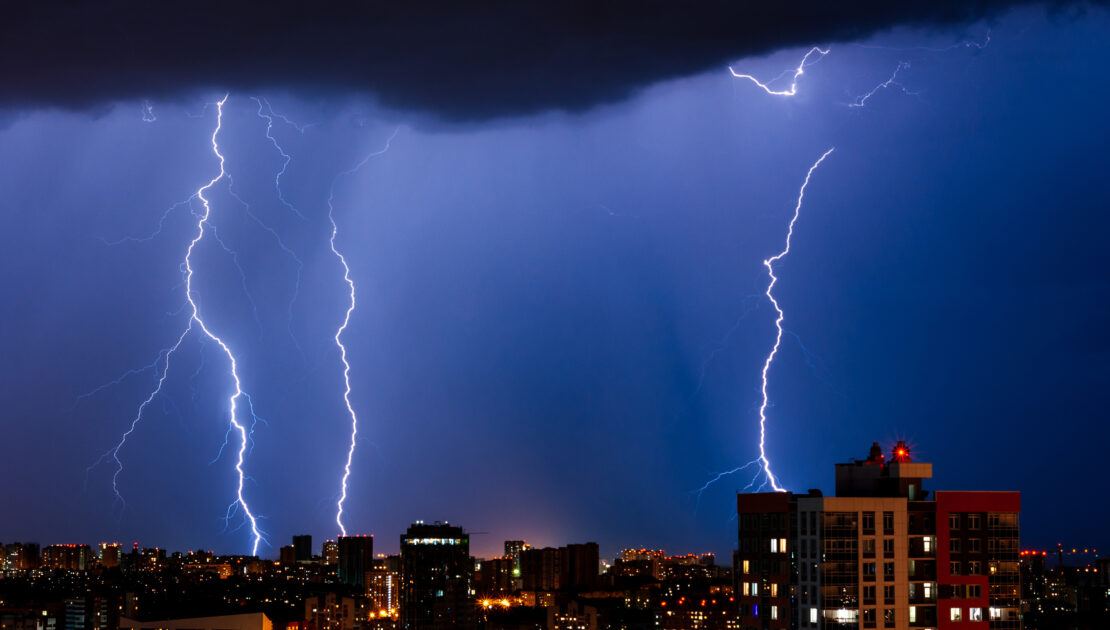The Risks of Severe Convective Storms

Severe convective storms can cause injuries, infrastructure damage and significant financial losses for businesses and their commercial properties. Often accompanied by hail, flooding, strong winds, lightning and abrupt temperature shifts, they are among the costliest types of natural disasters, according to industry research.
To reduce potential losses and improve safety, employers should understand the risks of severe convective storms and take appropriate action to address them.
Severe Convective Storms and Their Impacts
Convective storms, or thunderstorms, form when heat and moisture are transported vertically in the atmosphere. As the rising warm air cools, water vapor condenses into the water droplets, forming clouds. There are several types of convective storms, including single-cell, multicell and supercell thunderstorms, that vary in length and intensity. By definition, severe thunderstorms have winds of at least 58 mph, produce a tornado, and may produce hail that measures at least 1 inch in diameter.
The damaging forces of severe convective storms can impact businesses by causing:
- Employee or third-party injuries or fatalities due to unsafe conditions
- Extensive property damage to buildings, furnishings, inventory, automobiles, equipment and other structures
- Business interruptions, extra expenses and lost income from closures or temporary relocations
- Increased insurance costs, as more claims may result in higher premiums
Actions Businesses Should Consider
Employers can incorporate the following strategies to improve safety and reduce severe convective storm risks:
- Assess the risks by taking note of their location’s weather patterns and considering how the associated conditions threaten safety and business property.
- Monitor weather forecasts to know when severe weather is on the way. This information can provide guidance on early closure decisions and adequate preparations.
- Prepare the property to better withstand a convective storm’s forces by installing window shutters and covering outside property with tarps and securing them. Emergency supplies and first-aid kits should also be on hand if employees or others on the premises need to seek shelter while onsite.
- Communicate with employees and clients following severe weather. However, power outages may occur and cellphones may not be reliable during natural disasters, so devices that do not utilize those systems (e.g., walkie-talkies) may be required. It is also important to notify employees when it is safe to return to work after a storm.
- Learn from past experiences to identify aspects of operations that may be exposed and strengthen risk management planning.
- Review insurance policies to ensure coverage adequately addresses the risks from severe convective storms.
Conclusion
Severe convective storms can be a threat to businesses. By taking proactive measures and implementing risk management policies and procedures, businesses can mitigate their exposures, help keep their employees and clients safe, and protect their properties.
Contact us today for more risk management solutions.
